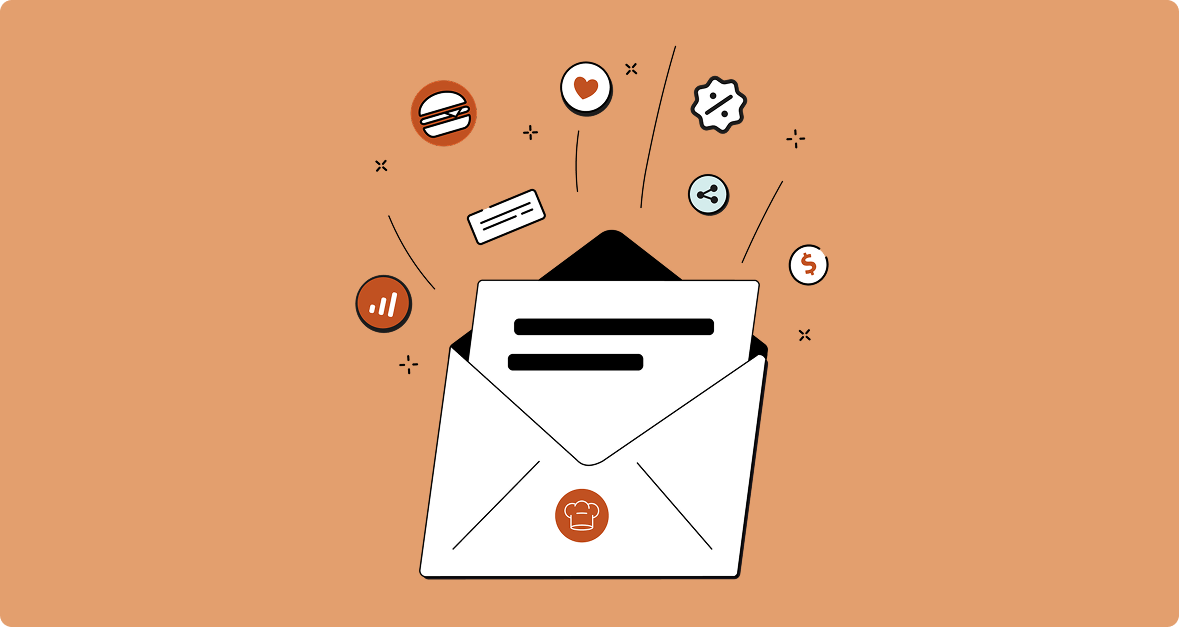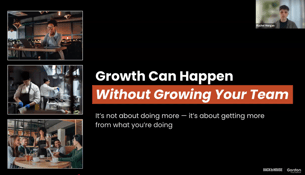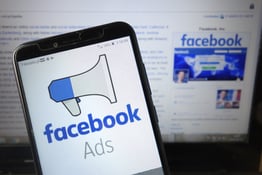For many small restaurant owners, customer data — who’s visiting, how often, when, and what they’re buying — often takes a back seat to the daily grind. With endless responsibilities and little spare time, the focus is usually on making it through the next shift. But data isn’t just for the big chains.
Thanks to a new wave of restaurant customer data platforms, even small restaurants can now tap into simple, intuitive insights that reveal customer preferences and behaviors. Data can help you make smarter decisions and build stronger connections with your guests.
The right restaurant customer data platform can unlock valuable insights about your guests and show you how to turn that data into action. With the right tools, even small eateries with limited resources can thrive in an increasingly competitive industry by:
- Creating highly targeted marketing campaigns
- Designing smarter promotions
- Boosting digital engagement
- Driving more foot traffic
Let’s dive into the recipe for success with restaurant customer data. I’ll break down how you can leverage it to spice up your marketing, boost guest loyalty, and streamline operations; all with affordable tech solutions that are leveling the playing field for small restaurants.
Why Customer Data Is a Game-Changer for Small Restaurants
Customer data provides small restaurants with valuable insights into customer preferences. Those preferences are vital at a time when customers increasingly expect personalized experiences. You can use customer data to:
- Identify your key demographics and target messaging to attract new customers
- Personalize promotions, events, and experiences based on customer behaviors
- Tailor menu options to meet the needs of your customer base
- Promote loyalty programs built around demonstrated customer priorities
- Measure and boost the ROI (return on investment) on your marketing campaigns
And today, with the technology for conducting sophisticated data analytics becoming increasingly affordable and user-friendly, even smaller operations can boost profits without buying expensive equipment or complex software programs.
Where Restaurants Can Collect Customer Data
Unlike most aspects of the restaurant business, the technology for collecting and analyzing customer data is becoming more accessible and affordable. With advancements in data analysis, machine learning, and AI, these powerful tools are no longer exclusive to large chains with deep pockets.
Today, even independent restaurants can leverage customer data using a range of cost-effective solutions. Just a few examples:
- POS (point of sale) systems and online ordering platforms can track customer order histories, preferences, and spending patterns.
- Loyalty programs make it possible to gather valuable data on repeat customers.
- Reservation and waitlist data can reveal customer trends as well as pinpoint peak and off-peak periods.
- Opt-in email and SMS marketing lists help restaurants gather contact information, maintain open lines of communication, and send personalized offers to patrons.
- Social media and website analytics provide details on demographics, engagement, and online behavior.
The right restaurant customer data platform may be able to gather and integrate data and insight from all of these sources.
How to Use Customer Data to Create Smart, Personalized Promotions
Now that you know where to look for it, let’s discuss what to do with restaurant customer data. You can use your findings to craft the kinds of personalized promotions that improve engagement, drive sales, and ultimately boost revenue.
Personalized Offers Based on Order History
Customer order history can tell you a lot about individual customer preferences. Use this history to offer personalized discounts or special deals based on a customer’s favorite dishes, visit frequency, or average spend.
For instance, if a patron’s order history suggests that they typically order beer or wine with a meal, consider reaching out with personalized drink specials.
Targeted Email & SMS Campaigns Tailored to Customer Segments
Your customer data can be used to segment your customer base. Segmenting refers to the process of dividing guests into different groups, based on shared demographics, behaviors, or preferences.
In the case of restaurant guests, you might segment customers based on characteristics like geography, frequency of visit, or favorite dishes. This makes it possible to tailor your email or text messaging around specific goals.
For example, you may be able to use segmentation to:
- Target area businesses with lunch menu discounts
- Notify your regulars about new happy hour specials
- Reach out to customers who haven’t visited in a while with a “welcome back” promotion
Birthday & Special Occasion Promotions
Collecting customer data makes it possible to highlight personal occasions and make individual patrons feel appreciated. Use demographic information to send your customers personalized birthday wishes along with a coupon for a freebie (appetizer, drink, dessert) or discount with their next meal.
Limited-Time & Seasonal Offers Based on Customer Interests
In addition to using data for individualized insights, you can also identify customer patterns and industry trends. Use your findings to create limited-time offers or seasonal promotions tailored to customer interests.
For instance, you can create and actively promote a special prix fixe brunch menu for guests who come in on big dining-out holidays like Easter and Mother’s Day.


Subscribe to Our Monthly Marketing Newsletter
Get proven strategies and tools to attract new customers, boost engagement, and grow your brand.
Upselling & Cross-Selling Promotions
Customer data can also help you increase average check sizes by allowing your front of house personnel to pinpoint personalized opportunities for upselling and cross-selling.
For example, if a customer regularly orders a burger that comes with fries, you may be able to encourage more spending by recommending your “loaded fries” or another compatible side dish with a slightly higher price tag.
Dine-In Heatmap Offers
Restaurants can use their POS data to track peak and slow hours, then create time-specific promotions based on customer traffic patterns. For example, a restaurant may opt to offer a "Late Lunch Perk" with a discount or free add-on for customers who dine in during traditionally slow afternoon hours.
Tools & Software That Make Data-Driven Promotions Easy
As I noted earlier, your tech stack may already include a restaurant customer data platform. It may simply be a matter of leveraging this platform for maximum impact. Here are some solid options.
POS Systems With Built-In Customer Tracking
POS (point of sale) systems capture detailed customer data on order history, visit frequency, average check size, and more. These data points can be integrated with your loyalty program and your digital marketing tools.
Prices for POS systems can range from $0 to $150 per month but can vary widely, depending on the features you select. POS systems can be highly customized and priced accordingly. Examples of popular POS systems include:
Email & SMS Marketing Platforms
Targeted email and SMS campaigns remain among the most powerful and affordable strategies for establishing direct and purposeful contact with your customers. In fact, some providers may offer free barebones options for smaller businesses.
Paid email and SMS plans will usually be priced between $10 and $50 per month, but may go up from there if you choose more hands-on features like third-party content development. Examples of popular email and SMS marketing platforms include:
CRM & Loyalty Program Software
Customer Relationship Management (CRM) and loyalty program software can help you keep track of customer preferences and interactions. Use these insights to create personalized promotions, individualized discounts, and targeted messaging.
Pricing for CRM software can vary widely depending on the size of your operation and the features you choose. Base prices can range between $30 and $300 a month. Examples of popular CRM and loyalty program software providers include:
Analytics Tools for Social Media & Websites
Social media and website analytics tools can track a variety of customer interactions including online engagement, lead generation, site traffic, conversion rates, and more. These insights are extremely valuable for tailoring user experiences, monitoring the effectiveness of digital marketing campaigns, and shaping your online brand identity.
Some basic analytics tools may be free. Paid plans typically fall between $15 and $100 per month. Popular providers include:
Best Practices for Collecting & Using Customer Data Ethically
Any time you’re collecting and using customer data, you have a responsibility to do so ethically and with full transparency. Here are a few important things to consider when handling customer data:
- Don’t over-collect sensitive data: Limit your collection only to the data required to improve customer engagement and personalized promotions. Examples of data you can collect include the customer’s birthday, home address, and the menu items they purchase most often; don't collect credit card numbers or banking information.
- Follow email and text marketing regulations: Be aware of, and remain in compliance with, the rules around email marketing including the CAN-SPAM Act, as well as state and local laws.
- Be transparent about data usage: Tell your customers exactly how their data will be used, and request consent for sending personalized offers and promotional content.
- Offer opt-out options: Make sure it’s easy for your customers to unsubscribe or opt out of email and SMS campaigns.
How Back of House Can Help Your Small Restaurant
As you can see, there is no single one-size-fits-all restaurant customer data platform. It really depends on a lot of factors like your budget, the size of your operation, and how you plan to use your data.
Not sure where to start or what to do with restaurant customer data? I’ve got you covered! Reach out today for your personalized consultation and we’ll work together to figure out exactly what you need.





